|
It’s 6 a.m. It has been dark for over 12 hours and it feels like I haven’t seen the sun in a while. Did I really sleep? Or is this a dream? Well, no. It’s my early morning yoga practice….to.fit.it.in! With this week’s early morning mat time, it got me to thinking about what is the best time to do yoga. Two things came to mind… When I took an academic yoga class in my undergraduate degree, I recall that we were not suppose to eat prior to practice. Or at least this is was the professor asked of my 21 year old self. Did I follow that “rule”? Not exactly. But it begs the question, should I be doing yoga first thing in the morning before eating anything? Which leads me to my world of exercise physiology and working with registered dietitians where not eating before exercise (particularly when first rising) is pretty close to a complete no-no. Breakfast is about “breaking the fast” so having something, small as it may be, is recommended. So the timing with food idea may have some flaws. And maybe something to explore at a later date. As for the second thing, it too stems from my exercise physiologist self. When is the best time to exercise? Old thought is first thing in the morning to rev up the metabolism but today’s research doesn’t support a specific time of day. What I do recommend is to pick a time that works best for you…or the individual. I guess that is what I had to do for practice this week. It was at 6 a.m. that worked best. But I have to say, waking up during practice - because that was what was happening - was absolutely lovely first thing in the morning. I made it to my mat in the dark with not much difficultly and I found a gentle morning video from Adriene that slowly led me into practice. At that hour, my best intention to set was all about self-love. Being kind to myself throughout the practice as my body came to life. The practice ended with no savasana which allowed the energy from the practice to continue to flow into my day. I loved how energized I felt and was keen to get going to the day. Missing savasana was a small price to pay for the peaceful and tension-free way to start my day. To be sure I had a bit more insight into the timing of practice, I went to my go to Google search which took me to a great article by Yoga Journal. It said, Since an important part of yoga practice is getting to know yourself and how you change from moment to moment, it makes sense to let your energy inform you about how to practice according to the season or time of day. What a great idea!
Sometime practice just has to fit in. Other times, I can dictate when it fits best for me. Although, I am thinking the early morning might be something I’d like to try. It provided a calm and quiet time that I so need in my life. Morning yoga, maybe see you again soon, LW
1 Comment
A colleague commented to me this week that a friend of hers, who is a busy working professional, has been having lots of trouble with sleep. The only thing that allows him to sleep like a baby is yoga! Surprised? Not really. Over the past couple weeks, insomnia has become the norm so I'm trying to get as much shut eye as possible before the baby arrives. And as much as I like warm milk at 3 am, my preference is to be milking in Zzzzs at that hour. It made me wonder what is available on the topic of sleep and yoga in the research world but also just on the internet. With my Google Scholar search, many, many hits came back. So, I combed through the most recent and applicable ones I could find, particularly review articles (for good summaries) and ones that related to pregnancy and picked two to review. The first review article from the International Journal of Yoga, related that the more relaxing and restorative poses practiced, the more likely to experience improved sleep. It stated: "Restorative postures, savasana, pranayama, and meditation encourage pratyahara, a turning inward of the senses which enables downtime for the nervous system, the byproduct often being improved sleep." Various research studies reviewed found that regular practice resulted in a significant decrease in the time taken to fall asleep, an increase in the total number of hours slept, and in the feeling of being rested in the morning. No who doesn't want that! The second article was a pilot study in Biological Research for Nursing, where women in their second or third trimester attended weekly mindfulness meditation and prenatal Hatha yoga classes in the community for 7 weeks. They found that: "[m]indful yoga shows promise for women in their second trimester of pregnancy to diminish total number of awakenings at night and improve sleep efficiency and merits further exploration." Interestingly, starting a yoga practice in the third trimester did not find significant benefit to quality of sleep. Good thing I've been practicing the whole pregnancy!
I scoped out what I could find on the internet and the Yoga Journal never fails to have an article. It is clear that meditation, light asana practice and breath work are key to helping with sleep and insomnia during the night. And as a guinea pig this week, after my weekly practice, I slept through the night. Calmed nervous system? Quite likely. Maybe a yoga night cap is just what I need to start doing, LW This week's practice clearly demonstrated that I've been sick and my regular practice has been blunted. Flexibility in most of my joints was lacking (even with pregnancy), which just shows how being away from a yoga practice can actually impact flexibility gains and maintenance. It is not surprising as basic fitness gains such as cardiovascular fitness and muscular strength in an exercise program can decline with even two weeks of no stimulus (read: bed rest). Not surprising that I felt this way this week. What does the research say about yoga detraining?
Well, I found no definitive information other than this brief response on Yoga Journal's website addressing shoulder inflexibility in practice after many years away from practice. So, I head into the flexibility research instead and find some interesting conclusions. In one hamstring flexibility study, researchers noted that after four weeks of nonstretching, study participants lost the knee range of motion that they gained from stretching in the first six weeks of the study. They conclude that the benefits of stretching will be lost relatively quickly if stretching is not continued. But hesitate to give an exact duration of time. Even at an acute or one time session, research notes that flexibility gains can be lost after about 90 minutes for most muscle groups. It makes sense as our bodies continue with the physical demands of day to day life, which can cause muscles to tighten once again. Nonetheless, it seems that reduced flexibility and dare I say limited yoga practice can have some short and long term implications to how well your muscles will stretch. An interesting point to take as a future teacher and a current student. It reinforces the importance of taking each session as it comes. The body can vary from day to day, practice to practice. The key here is to listen and practice to the best ability for that day. Honoring my body's flexibility and health, LW As I said last week, my body is ever changing and in this week's practice I've already experienced how I must modify and/or change poses.
I'm particularly feeling that lying on my stomach is not very comfortable nor on my back. I can withstand it for some time but long durations don't seem to work anymore. Instead this week, I've put more emphasis on my breathing, specifically the ujjayi breath. It has been a breathing technique I've done for years but really haven't explored it in much detailed. I thought this was a fitting time. Yoga Journal describes ujjayi technique as "[g]ently pulling the breath in on inhalation and gently pushing the breath out on exhalation [which] against this resistance creates a well-modulated and soothing sound—something like the sound of ocean waves rolling in and out." In practice, I've used the "haaaa" sound, which translates well into the ocean wave sound. The technique typically modulates the breath and creates a nice balance between the inhalation and exhalation. It is commonly translated into "victorious breath". How fitting as it can be used to calm the body (victory over discomfort?). Ujjayi breath is such a soothing and relaxing breath and using it during challenging poses is extremely helpful. And now being pregnant, it too is helpful when moving a body that is slightly different from the norm. And it so happened that I received an email recently from Leslie Kaminoff, of www.yogaanatomy.net and author of Yoga Anatomy, with a perfect video outlining some key parts of the ujjayi breath. Click here for his take on ujjayi breathing. As this pregnancy moves into the later weeks, the emphasis on breath will be ever important! It's good to start working on it now! The power of the breath always amazes me, LW 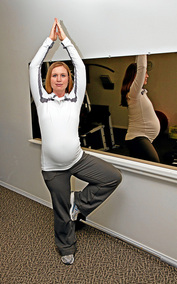 So the fatigue and stomach distress can only mean one thing, I'm pregnant! Yoga has been a blessing each week as I transition into my second trimester. But with the transition, I am now moving a new body where I have to ensure my yoga is adaptable to my ever growing belly! Here is what I remember from before (and from my other hat of being an exercise physiologist who specializes in pre/postnatal exercise): 1. Avoid overheating so no hot yoga for now. 2. Modification to supine poses (elevating torso by 20 degrees or so with a towel, block, blanket etc.) after 16-20 weeks due to the compression of the vena cava (large vessel that carries blood back to the heart) when lying flat on my back. 3. Stand close to a chair or wall with balance poses...just in case I feel like I'm going to fall. 4. My joints are more flexible because of the release of the hormone relaxin, which increases joint laxity...everywhere...not just through the pelvis. So, no being a hero with the poses and not to overdoing the obvious increase in range of motion. When I was pregnant last time through, I was able to take a weekly class with Judy. However, I am on my own this time. As I listed, I recall some poses that need modification but this pregnancy brain of mind isn't always clear. What do I need to be watchful of and how does my practice change? And, the overarching theme of what can pregnant women safely do in a yoga class? Yoga Journal has a four part series that outlines a basic overview of modifications in pregnancy then an article for each the first, second and third trimester. With further investigation, I also found an article specifically on contraindications. All five articles are very comprehensive as a student but also for the future teacher in me. So rather than rehashing the detailed articles, here are a couple more key things for me to remember! 1. Controlled breathing will be very helpful for labour but also ensure I'm not holding my breath during any of the poses. Obviously, not good for babe. 2. No head stands, hand stands or plow poses. Okay, this is pretty obvious that my physical body probably won't let me do such poses but it is really about blood flow and not having blood shunted away from babe. Makes sense! 3. Limit abdominal contractions (i.e. flexion and extension) such as in full boat pose and abdominal stretching such as in bow pose or full cobra pose. Having a strong pelvic floor is much more important than overemphasizing abdominal work right now. 4. Yoga is a great place to practice and ready my body for labour. Holding chair pose for about one minute is challenging just like a contraction. Practising hip opening poses such as bound angle pose will help keep the adductors (inner thigh) flexible which is essential for natural birth. So, there we have it, a refresher for me and a learning opportunity with my changing body. I'm positive I will stumble on more gems of wisdom over the next 24 weeks! 16 weeks done, April 25 is sure coming fast! Yoga is essential to my prenatal care, LW Image: Me at 8 months pregnant...last time around...and more blonde than I remember!
 I have really enjoyed the DVD, Yoga Journal 21 Day Challenge, I've been doing for the past couple weeks. It is so diverse with the poses, intensity and breathing techniques that I might just need to buy it for myself! I suppose I'm not super surprised as it is a product of Yoga Journal. This week, the DVD player lead me to a hip opening sequence to reduce tension. Whenever I would hear my teacher, usually Judy, talk about hip opening, I was ready to get started! This was because if you were to ask me about my hip tightness in general, I would say, "oh, it's okay. No complaints of pain or tension." But it would be only after an intense hip opening sequence of poses that I would say, "holy cow, I had no idea that my hips were THAT jammed up!" Speaking of cows, the pose I'd like to focus on this week is cow face pose (Gomukhasana). I was nicely transitioned into this pose and I was so happy that I was. It has been so long since I have done it. The leg positioning was the focus and since it had been so long since I'd done the pose, I couldn't recall the arm position! It is a bind with the hands clasped behind the torso. Time to focus on the arms in another practice session as it was about the hips this week anyway! Cow face pose is an asymmetrical seated pose that is a hip and shoulder opener. As I said, I only did the lower body portion and found extra tightness in the right hip than the left. Apparently, it is normal to find one side easier than the other in this pose.
As memory serves from previous classes on hip opening, there can be intense emotion when stretching out the tension in the hips. According to Yoga in my Pocket.com, "[t]he hips are thought to represent how we feel about moving forward." I'll explore this in greater detail in another post as I don't totally have a grasp of how that all works. Interesting, nonetheless. I enjoyed the stretch so much that I wanted to sit in the position all afternoon and I have to admit, I was slightly disappointed when we moved on. I guess thats a signal to practice cow face pose more often (do I say that about all yoga asanas?!?) Tension begone, at least this week, Lisa I love learning all the terminology of yoga, from the sanskirt asana names to the different technique names, it is almost like learning a new culture or language. Which I suppose it sort of is.
This week I popped in a newly borrowed DVD, Yoga Journal 21 Day Challenge, from the library (side note: I'm super excited that the Edmonton Public Library now loans DVDs for three weeks!) and started following my new teacher. She took me through an easy to follow sequence of poses and had me challenged throughout. What caught my attention, though, was the way she described a pose. We were "binding". Now I have to admit, this variation on the pose (bound extended side angle [Baddha Parsvakonasana] versus extended side angle [Utthita Parsvakonasana]) was different so I needed to know more. Let me explain further... Binding, as it is called (and I didn't realize it had a name) is when in a pose you clasp your hands together to intensify the stretch, clasp the hand and foot together to progress the pose or when the arms or legs work together by exerting equal force against each other. Here is a thorough video with many examples of poses that bind and here is a list of benefits. In past practice, I had been doing binding poses and just didn't know it...or know how to name it...such as eagle pose (Garudasana), dancers pose (Natarajasana) and bow pose (Dhanurasana). Now back to my practice. Initially when my new teacher guided me into bound extended side angle, I felt apprehension. I suppose this is normal, as you think, "you want my hands to connect in which way?" However, I was pleasantly surprised that getting my hands to touch AND clasp wasn't terribly difficult. Whew! The pose was an excellent chest opener, leg strengthening challenge and mental toughness exercise. This week's practice made me recall other binding poses that I quite enjoy and must explore in the upcoming weeks. Not really tied up in knots, just "bound" to try more binding poses, LW It's been balmy if not tropical here in Edmonton this week. And all I think about is the crystal blue waters of the ocean rather than the brown ripples of the North Saskatchewan river! It seemed fitting in this week's practice that I dabble in dolphin (Makarasana) pose, which makes me think of visits to southern climates or tours on a cruise. One of the coolest things I've ever seen is a large pod (yes, this is what a group is called) of dolphins swimming in the waves next to the cruise ship I was on. Such lovely animals that glide effortlessly in the water. Now, my dolphin pose may have not been effortless or lovely this week BUT I gave it a try! Initially, I had thought dolphin pose was a variation of downward facing dog. However, with further exploration I soon realized it is actually a precursor to a inversions such as a headstand. The amount of force applied to the upper body, particularly the upper back musculature, is tremendous (try holding the pose for a while!) So, when you don't feel like trying an inversion, dolphin pose might be just the next best thing. According to Yoga Journal, the benefits of dolphin pose are:
Furthermore, in Timothy McCall's book, Yoga as Medicine, it is recommends to do dolphin pose when one has carpal tunnel syndrome as there is less pressure on the wrist and the weight of the body can be held up by the forearms. I have rarely done this pose in practice. But from what I've found, it has great value. It might be my answer to inversions for now. As you may have noticed, I've never written about them yet! I hope dolphin pose will help me move into inversions effortlessly, LW This weekend's practice was full of yawns. I have to admit it was on Saturday night in my mostly dark basement. To give a perspective of how many yawns occurred, I lost track counting at 10! Was I not interested in practicing, was I bored with the DVD I was trying for the first time (Yoga for Beginners II by Patricia Walden), or was I just down right tired???
I can recall that Judy spoke about yawning in yoga class and if memory serves, it relates to listening to the bodies cues for oxygen? She welcomed yawns in her class with a chuckle and a smile! I had to explore more... In most of my yoga inquiries, Yoga Journal always pops up and with good reason. It seems they cover all the topics I am curious about. And without fail, the first site that came up with my search was from the Yoga Journal website. The author I know well (not personally though) as I've read his book and perused his website. Timothy McCall writes about yawning during yoga. He states: "...the sympathetic branch of the autonomic nervous system (ANS), associated with the "fight or flight" response, is more activated [during the day] than the parasympathetic nervous system, the branch of the ANS associated with rest and relaxation...Yogic breathing or practices that lengthen the exhalation relative to the inhalation can pretty quickly lead to parasympathetic dominance, and that's probably why the yawning occurs." I couldn't have wrote it any better. That totally makes physiological sense! Other commentary on yawning during yoga includes the need for oxygen, stretching the mouth in a yawn is just like stretching the body during asanas, and that if a yawn occurs during yoga it is due to lack of sleep! It all seems reasonable for explanations. Later on the weekend I chalked up the yawning to needing more sleep. My Sunday nap just fit the bill. To many more ZZZs and a few less yawns, LW Side note: Interestingly, I found a book called Yawning Yoga. I'm on a hunt to find a copy for a what sounds to be a good night read! I got it!
My comments last week led well into this week because I got to participate in corpse pose (Savasana) at a hot session at Yoga Central. And what I wrote last week completely holds true - it's both physical and mental relaxation. Now, I'm lying there, in corpse pose, thinking WAY too much because I've started to intellectualize the pose. However, the great thing about (some) thinking is that when in corpse pose, is it better to be in complete silence or be guided through a relaxation sequence? I jump back to my initial practice with my home DVD (Ali MacGraw Yoga Mind and Body), where Erich Shiffmann, talks through corpse pose using wonderful words ("Keep it simple. All you do is relax everywhere and be aware how you feel...Let the relaxation spread."). So, I had the early experience with gentle talking during corpse pose. But during my last practice and many other times, teachers have left you in silence with no guidance. Silence for me can cause my mind to be distracted and the "heavy thinking" or introspective talking starts to roll. It's not really ideal for the relaxation. I wonder, what are opinions as to what is "suppose" to happen during corpse pose. And off I go exploring to find out.... What I find is actually not totally what I expected. I was wrong in thinking it is one or the other. But in fact, based on what I found on the Yoga Journal website, corpse pose is to be practiced in silence. But it is the preparation or the lead up to the corpse pose where some talking can occur. I also found a great article for teachers about how to incorporate corpse pose which gave me further insight. With some self-reflection, I think I do need a form of transition into corpse pose (i.e., guided relaxation) so that the voice in my head is calmed and quieted as I relax into the pose. With my exploring, I found a great piece on corpse pose etiquette here. I got a good chuckle from this one! And a quick tips list here. Oh so very interesting this journey. And it continues... LW |
Aspiring Yoga TeacherI've practiced yoga since I was a pre-teen and have always found it to keep me centered. I will be a teacher one day and this is my journey to discover teaching and practice. Archives
April 2019
Categories
All
|
Edmonton, Alberta

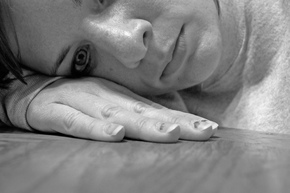
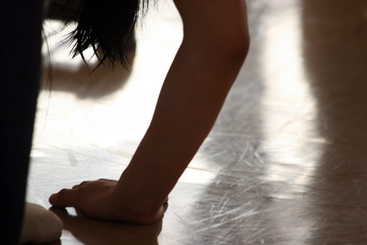
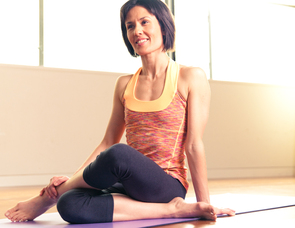
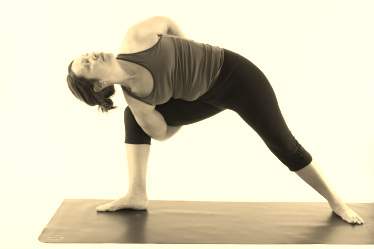


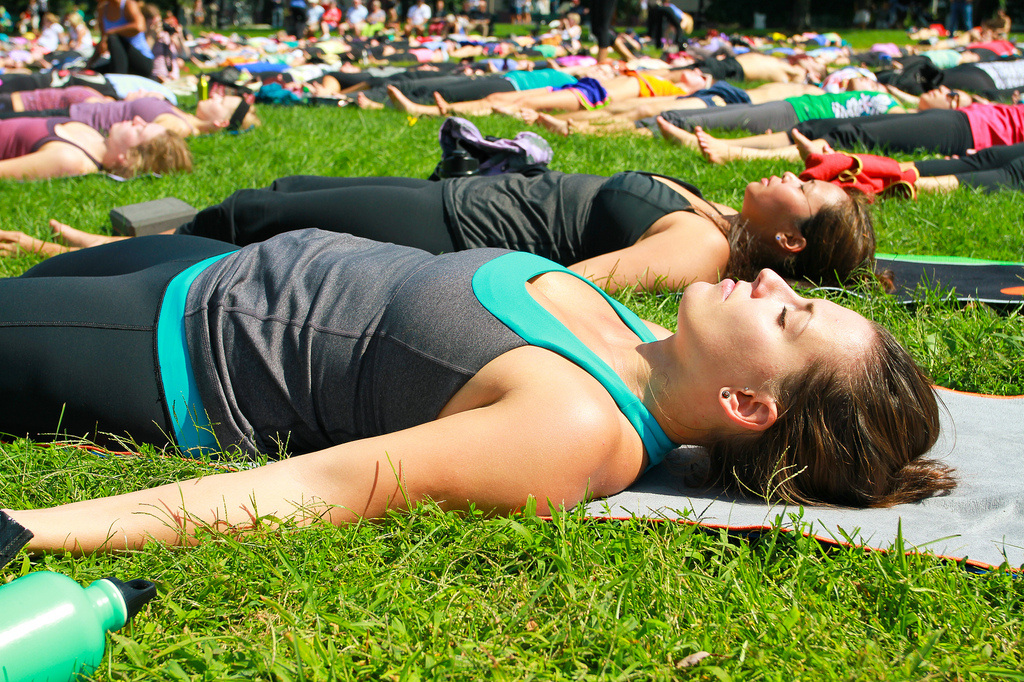
 RSS Feed
RSS Feed